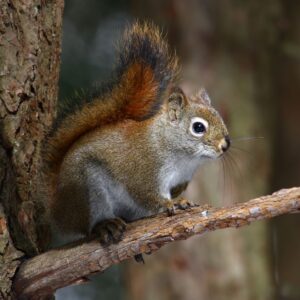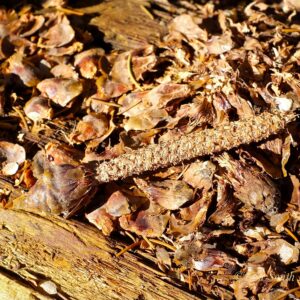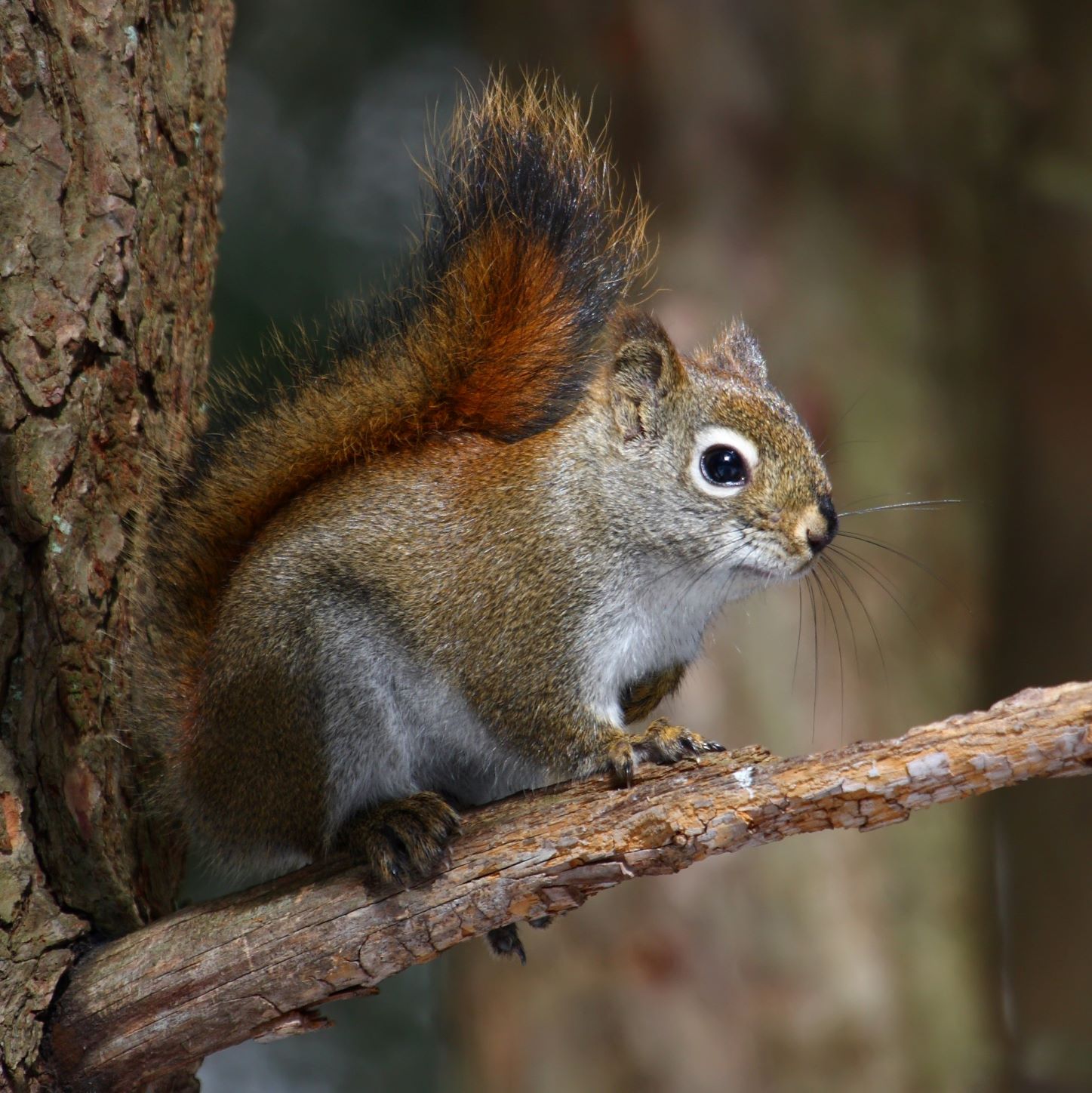August 6, 2021: Dining Habits of the Red Squirrel
 I was walking my dog the other day when a red squirrel crossed our path, carrying a shapely white object almost as large as it was. It was far enough in the distance that my dog didn’t notice, and I had to do a double take to figure out what I was looking at. As the squirrel made its way into a young spruce tree and left the white object on top of some branches, what I was witnessing became clear. The squirrel was storing mushrooms.
I was walking my dog the other day when a red squirrel crossed our path, carrying a shapely white object almost as large as it was. It was far enough in the distance that my dog didn’t notice, and I had to do a double take to figure out what I was looking at. As the squirrel made its way into a young spruce tree and left the white object on top of some branches, what I was witnessing became clear. The squirrel was storing mushrooms.

a red squirrel left this mushroom on top of a spruce branch to dry out for later storage
Summer is the bountiful time of year, when squirrels are stashing food for the leaner months of winter. Red squirrels mainly feed on the seeds and cones of evergreen trees, but they will also eat mushrooms, bird eggs, berries, and fruit when they are available. Seeds and cones are stored in underground caches, ready to be dug up later. Sometimes they forget to dig up these seeds, and unintentionally plant trees in new places. Mushrooms on the other hand are stored differently, placed atop branches to dry out, then gathered and placed in tree cavities.
![]()
![]()
![]() Many species of mushrooms are collected by squirrels including those that are toxic to humans. They have the ability to eat poisonous mushrooms because of their unique gut, which passes toxins straight through their body without ever entering the bloodstream. Mushrooms of all sizes are gathered as well, and if the mushroom is too large to carry, the squirrel will break it into pieces for transport. This often leaves mushroom crumbles on the ground, another sign of squirrel activity.
Many species of mushrooms are collected by squirrels including those that are toxic to humans. They have the ability to eat poisonous mushrooms because of their unique gut, which passes toxins straight through their body without ever entering the bloodstream. Mushrooms of all sizes are gathered as well, and if the mushroom is too large to carry, the squirrel will break it into pieces for transport. This often leaves mushroom crumbles on the ground, another sign of squirrel activity.

A close up photo of a red squirrel midden pile shows the leftovers of a spruce cone
Squirrels can eat their own body weight every week, so all of this preparation and storage is important for survival. When hiking on our local preserves you will often witness a squirrel perched on a tree stump, dining on a spruce cone. While they will eat all parts of the mushroom, they do leave behind the scraps of their seed and nut meals. These leftover cone scales and acorn shells collect in piles called middens, which sometimes reach several feet across and are visible throughout the forests.
So next time you are visiting a BRLT preserve, be sure to look up and see if you can find any loose mushrooms hanging in the tree branches or look down and see if you can find a midden pile filled with spruce cone scales. Once you start looking, you will see that signs of squirrels and their dining habits abound.




